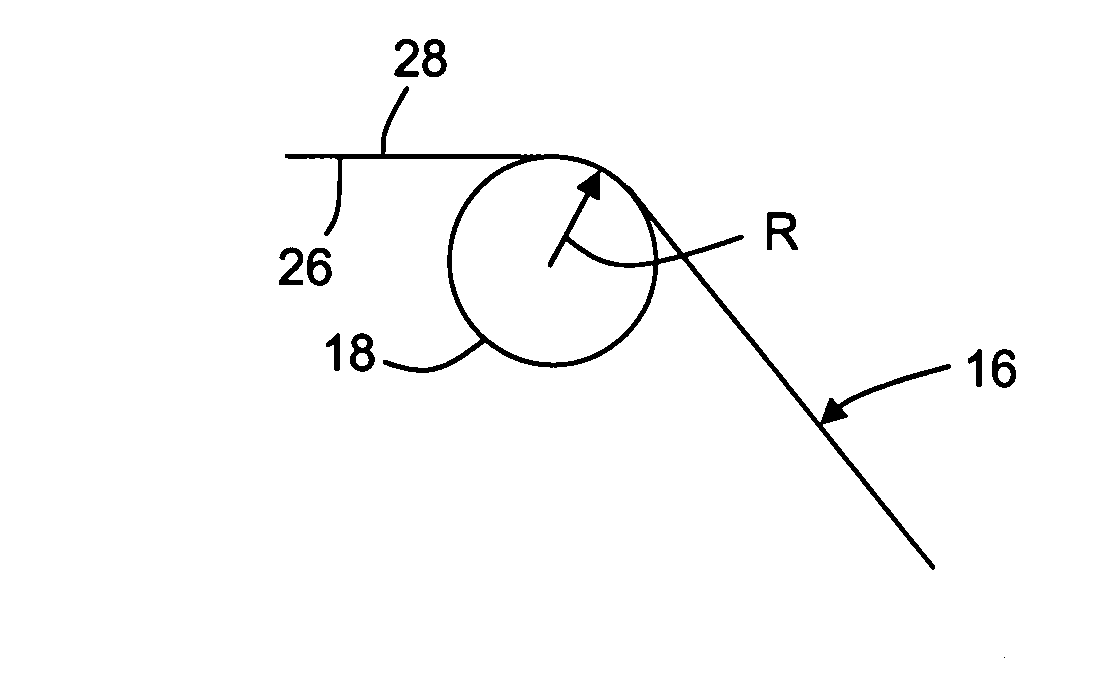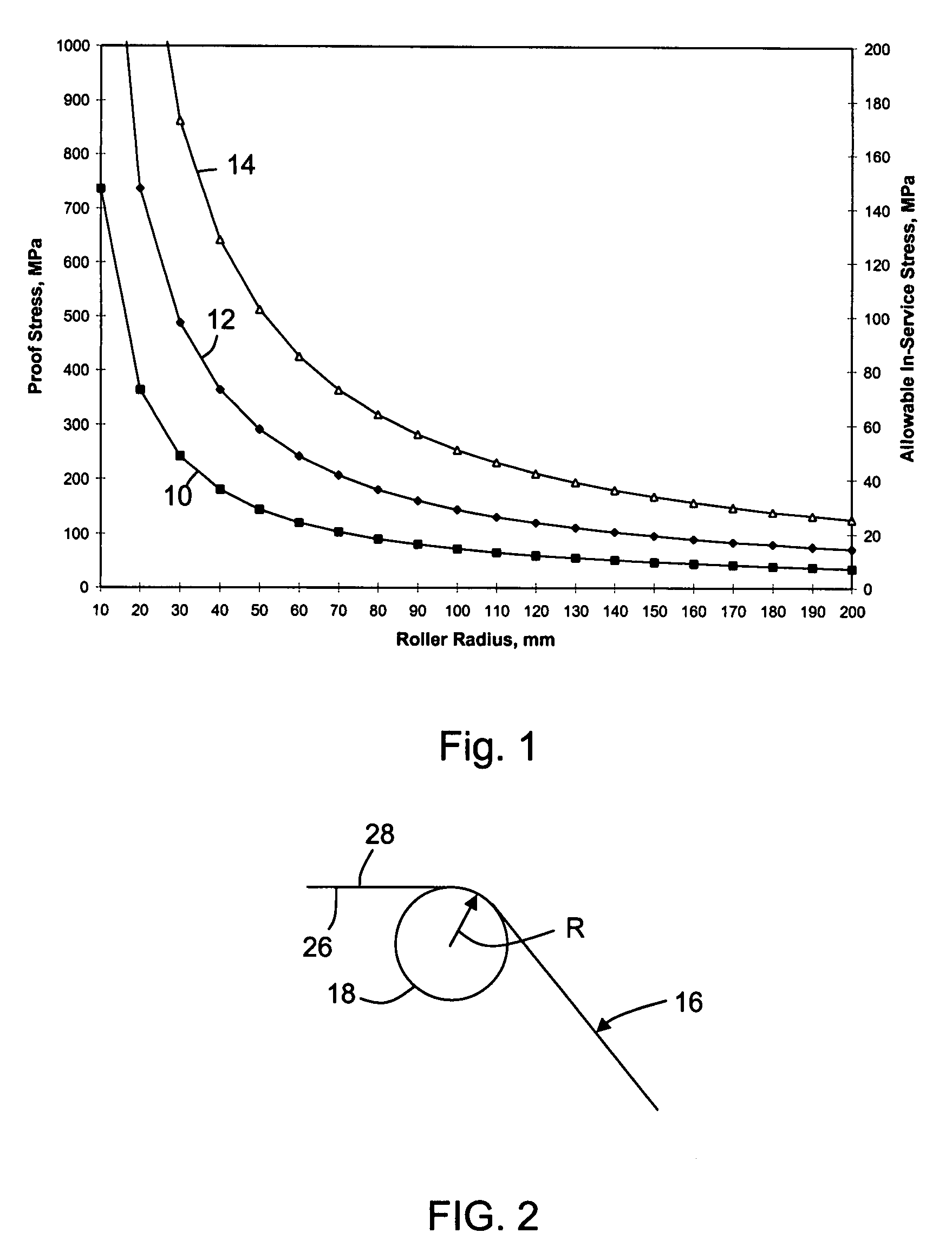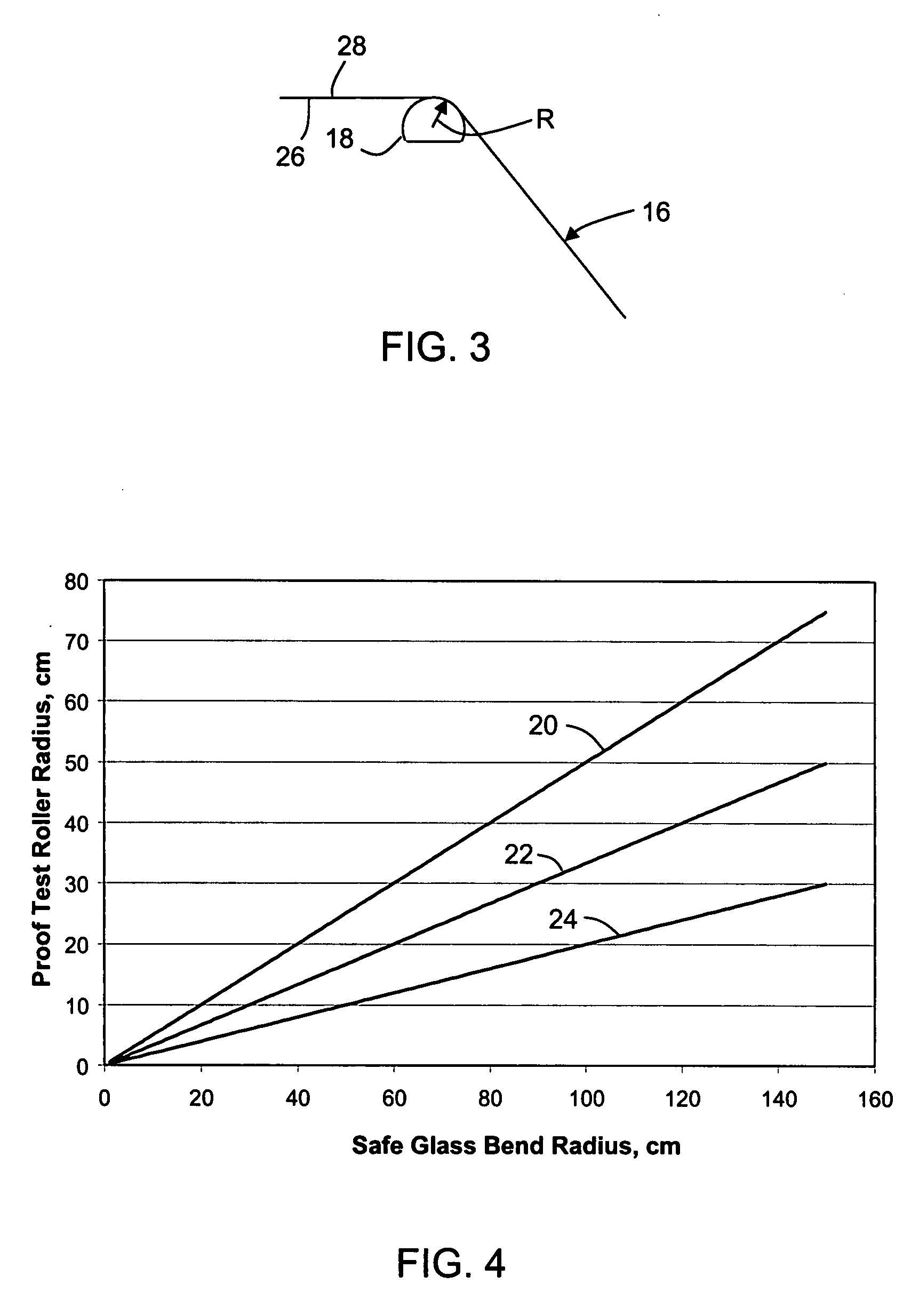Method and apparatus for proof testing a sheet of brittle material
a technology of brittle material and method, applied in the direction of apparatus for force/torque/work measurement, material strength using steady bending force, instruments, etc., can solve the problems of infancy introduction of very thin, glass sheets, glass cutting,
- Summary
- Abstract
- Description
- Claims
- Application Information
AI Technical Summary
Problems solved by technology
Method used
Image
Examples
Embodiment Construction
[0023]The strength of glass is dictated by the presence of flaws in the glass. If tensile stress is applied to glass having a flaw, the stress becomes concentrated at the flaw. A flaw may be a microscopic crack for example, in which case the stress is concentrated at the tip of the crack. If the stress exceeds a certain magnitude, the original flaw—the crack—may grow. If sufficient stress is applied, crack growth may be virtually instantaneous, leading to catastrophic failure of the glass: it breaks.
[0024]Analogous to the strength of a chain being based on the strength of the weakest link, the strength of glass may be characterized as the strength of the largest, and therefore weakest, flaw. For example, if a tensile stress of 10 kpsi is applied to a glass fiber, and the fiber holds firm, the fiber is said to have a strength of at least 10 kpsi. That is, all the flaws that may exist on the glass fiber are smaller than that for which 10 kpsi would cause failure. As such, the “size” o...
PUM
| Property | Measurement | Unit |
|---|---|---|
| thickness | aaaaa | aaaaa |
| tensile stress | aaaaa | aaaaa |
| bending radius | aaaaa | aaaaa |
Abstract
Description
Claims
Application Information
 Login to View More
Login to View More - R&D
- Intellectual Property
- Life Sciences
- Materials
- Tech Scout
- Unparalleled Data Quality
- Higher Quality Content
- 60% Fewer Hallucinations
Browse by: Latest US Patents, China's latest patents, Technical Efficacy Thesaurus, Application Domain, Technology Topic, Popular Technical Reports.
© 2025 PatSnap. All rights reserved.Legal|Privacy policy|Modern Slavery Act Transparency Statement|Sitemap|About US| Contact US: help@patsnap.com



